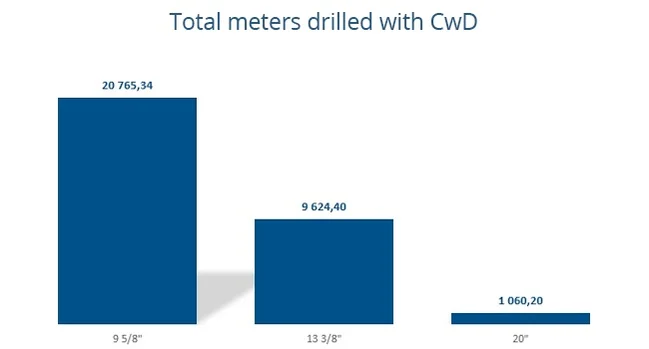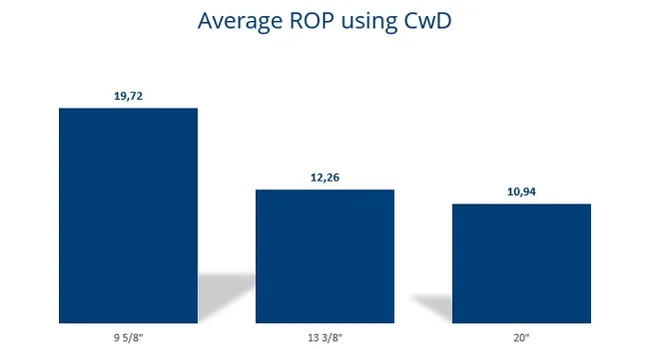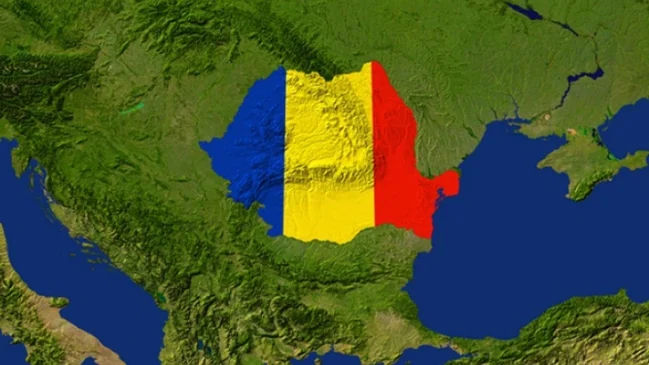Casing While Drilling (Level 2) in Romania. Experiences so far
Casing While Drilling has a history as a highly efficient way of combining drilling and casing. OWS Romania has been using this method extensively, and I will share some experiences, show some track records and highlight the reasons why CwD has been such a success for us here.

A final (maximum) TD of Casing While Drilling (L2)
The maximum depth with CwD technology is flexible and very dependent on geology; soft formations and shallow sections being the best suitable.
Whilst average TDs here in Romania are ranging from 300 to 900 meters, with 1475 m being the deepest Level 2, you could easily go to 2500 meters in the desert of Saudi Arabia, or similar conditions, using our CwD technology.
Formations
What are the characteristics of a section considered a good candidate for CwD – L2?
We find many CwD applications onshore Romania (in most of the known areas), surface sections and suitable, to apply OWS’s CwD technology.
- Romanian / Dacian or Pontian formations.
- Surface sections with gravels and coarse sand at surface, and sands with clay or marl intercalations.
- Mainly soft formations, poor to medium compacted.
The geology might vary between offset wells, and a detailed analyze is always needed prior to selecting the most suitable casing drilling bit (PDC drillable type) for that particular application.
The “smear” effect in CwD
Going by the dictionary…if you smear a surface with an oily or sticky substance, or smear the substance onto the surface, you spread a layer of the substance over the surface.
A more circular, gauged wellbore can be obtained due to smearing or “smoothing” motion of the casing string, since the annular clearance is much smaller compared to conventional drilling. Plastering/smearing effect helps in generating quality sections. Stress around the wellbore and loosing drilling fluid can be minimized, thus avoiding NPT.
The smearing effect is a side effect very desirable and almost always achievable when Casing While Drilling. However, the formations drilled may not look exactly the same as the geological expectations, and on rare situations the smearing effect might not apply.
CwD bits
Bits used for CwD in a non-retrievable system are, as most of you are familiar with, drillable PDC type bits. After reaching the desired depth, the casing is cemented immediately. The casing drilling bit is then drilled out with the next planned BHA, as drilling a standard shoe or shoe track. This leaves us with a need for compromise. The bit has to be soft enough to be drilled through and “hard” enough to handle high speeds, and we have found the optimal balance between the two.
As a backup, a lateral bypass-port is installed on every bit. This will burst at a certain pressure to be able continuing cementing operation in case nozzles are blocked.
Our most common casing drilling bit sizes:
- 24” bit for 20” casing,
- 17,5” bit for 13 3/8 casing,
- 12 ¼ bit for 9 5/8 casing.
- 8,5″ bit for 7″ casing
We work hard, in cooperation with our bit engineers, to develop new CwD bits with new characteristics, implementing the experiences and expertise we’ve gathered from a total of 67 CwD-projects in Romania.

*Drilling in various areas, at various depths, in some cases with high risks of losses (controlled ROP)
Zero NPT
The impact on efficiency when combining two processes in one is obvious, but I would like to highlight the brilliant performance the method has on NPT. From our first projects in 2012 and until the end of 2014, 51 CwD jobs were run with zero NPT related to casing. Except for two small incidents in the winter of 2015, the trend remains the same up to date (October 2015).
Economical benefits
The higher the rig rates, the more potential economic outcome for the method, of course, but some basic economic gains are achievable regardless of price environments.
- Savings in drilling costs by eliminating additional trips.
- Using less time to finalize surface sections.
- Using less expensive drilling fluids.
- The annulus in a CwD section is “smeared”, thus reducing the need for planning high percent of cement excess. More than 20 percent savings on cement excess compared to conventional drilling.
We find CwD to be very profitable for our clients and they continue to use the method where applicable. The experiences OWS has so far, fuels the effort to continuously develop the method and technology to make it suitable for even more formations and casing sections.
>Read also: What is Casing Drilling (Casing while Drilling, CwD)
Topics: Casing drilling

By: Alexandru Gomoescu
Alexandru has been in the oil and gas industry for ten years providing drilling related services such as casing drilling, tubular running and drilling equipment rental. He is now Regional Manager (CESEE) at Odfjell Well Services.



